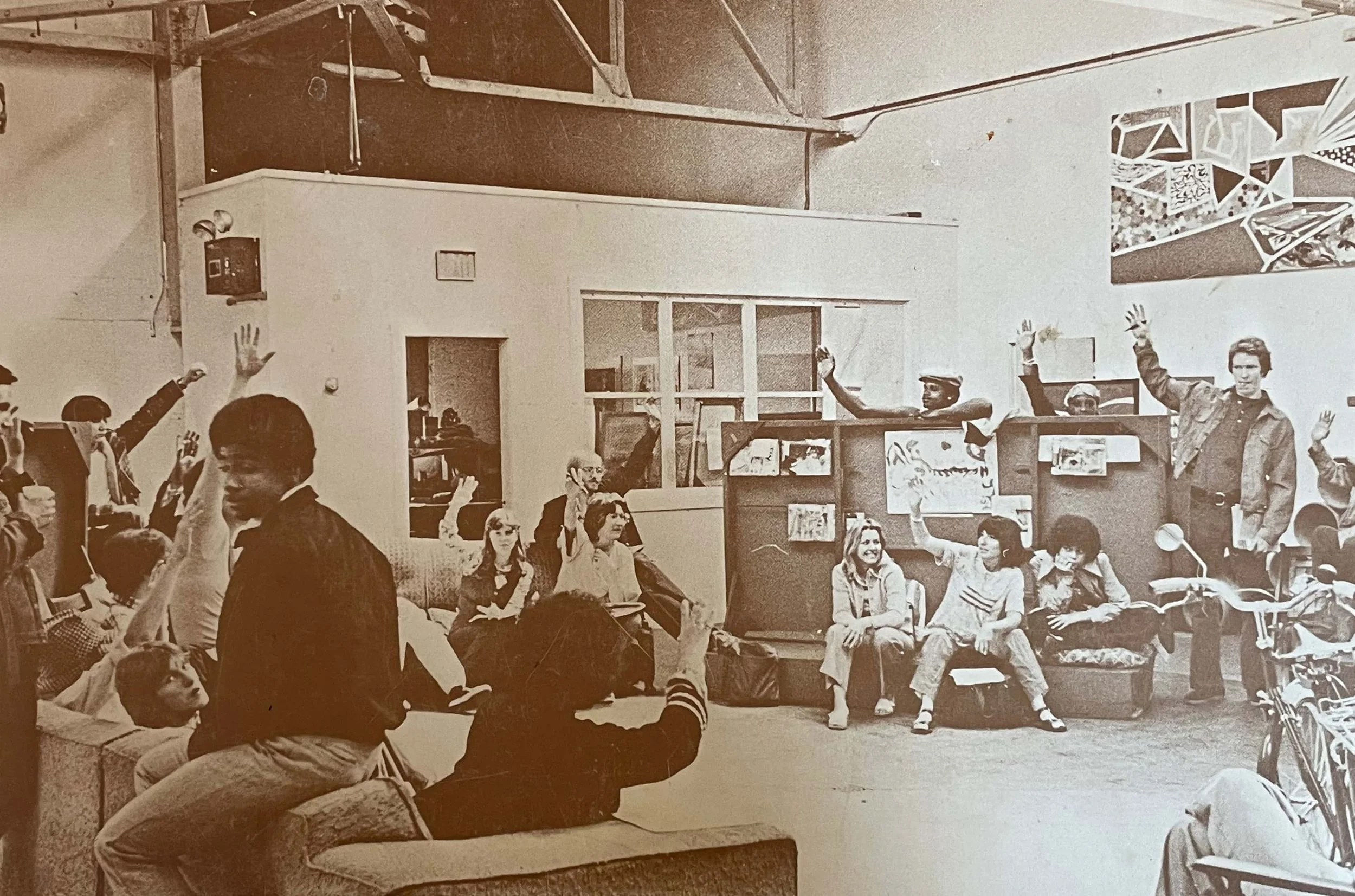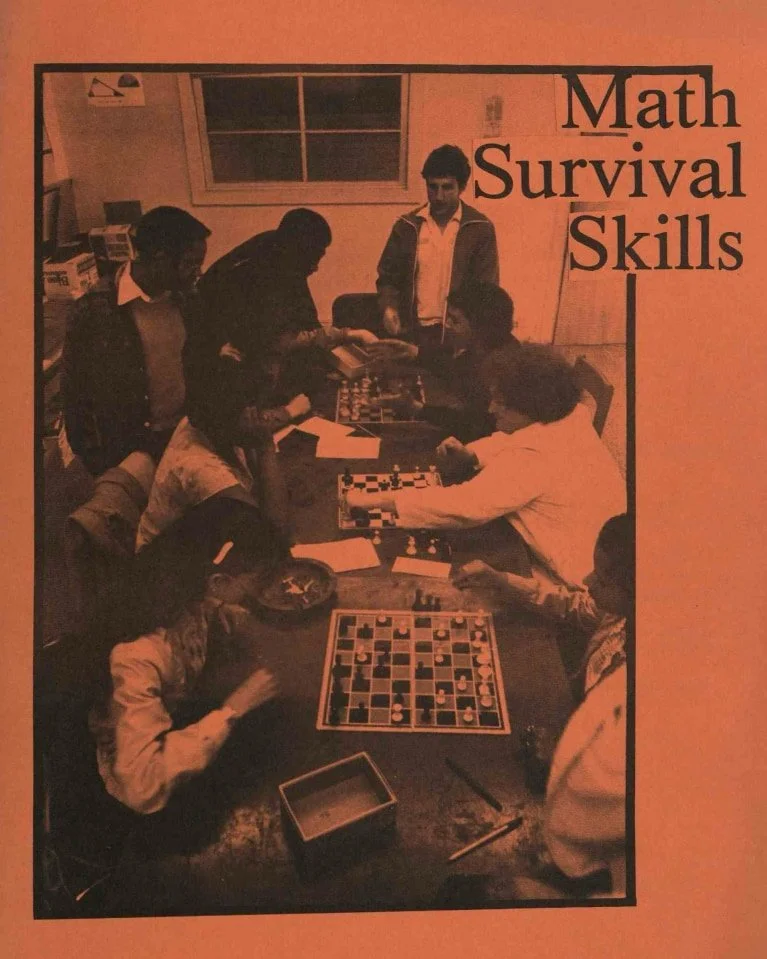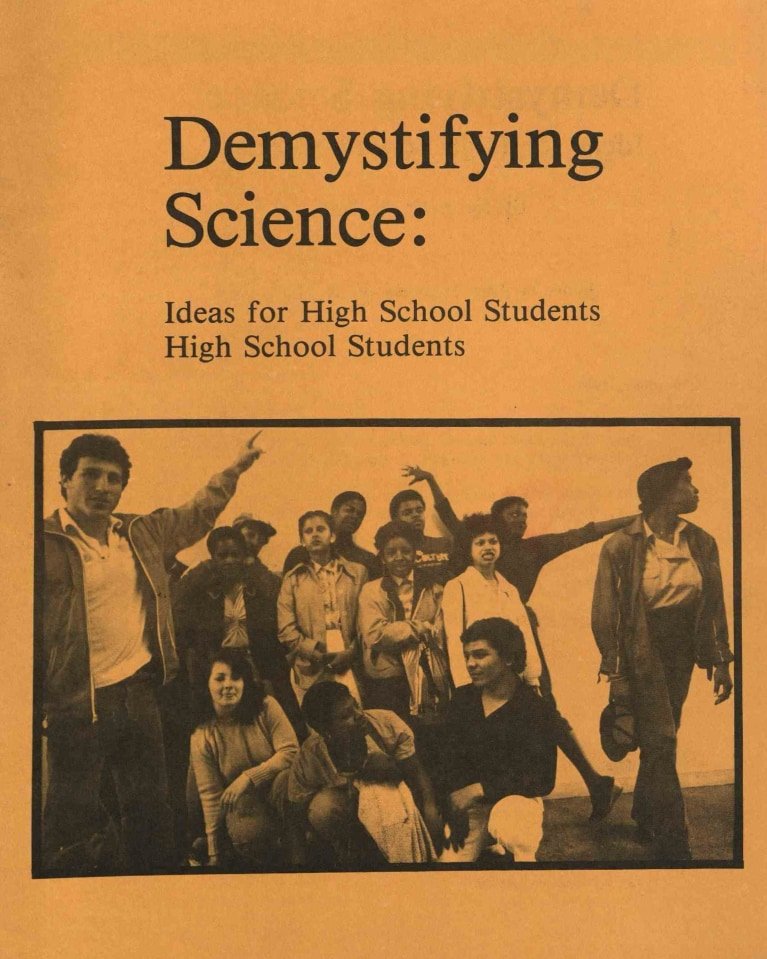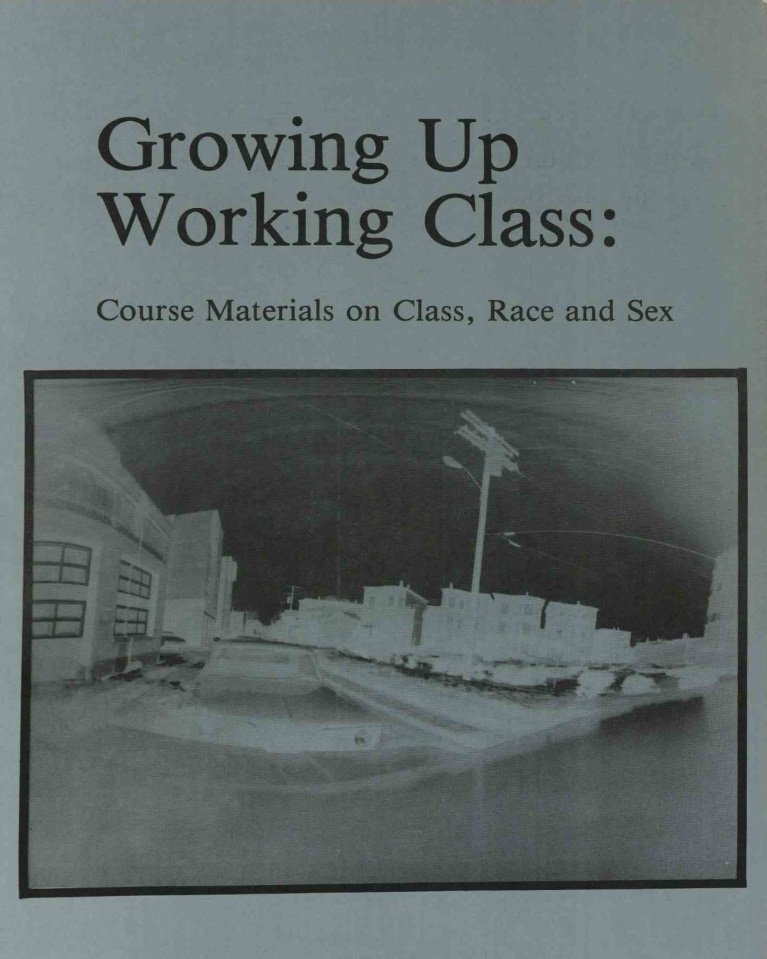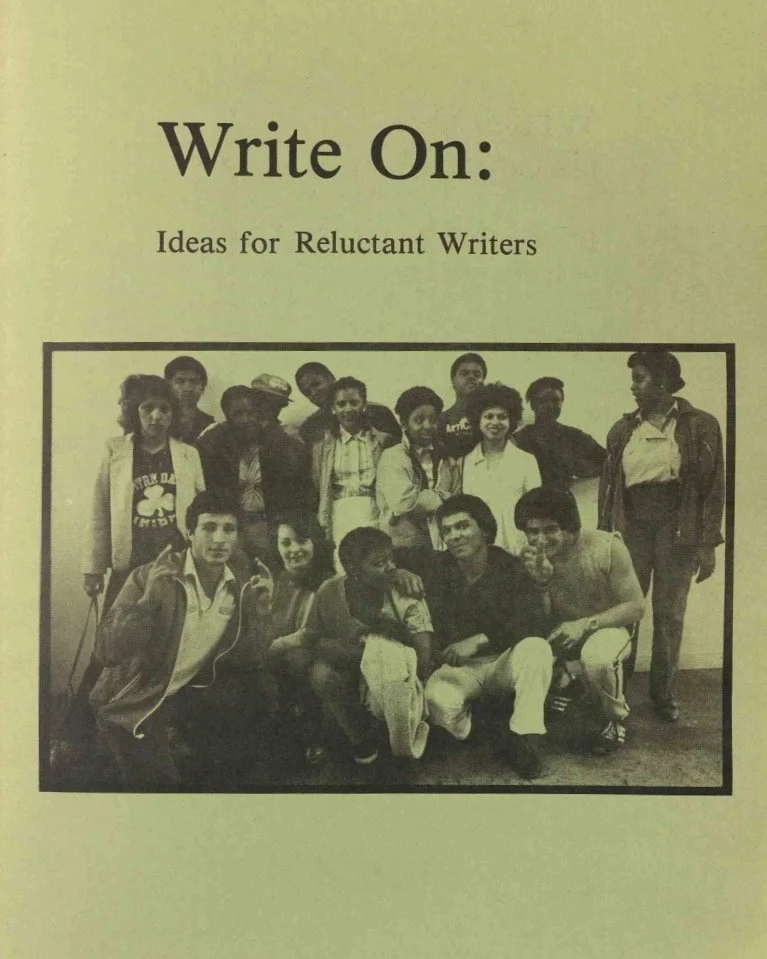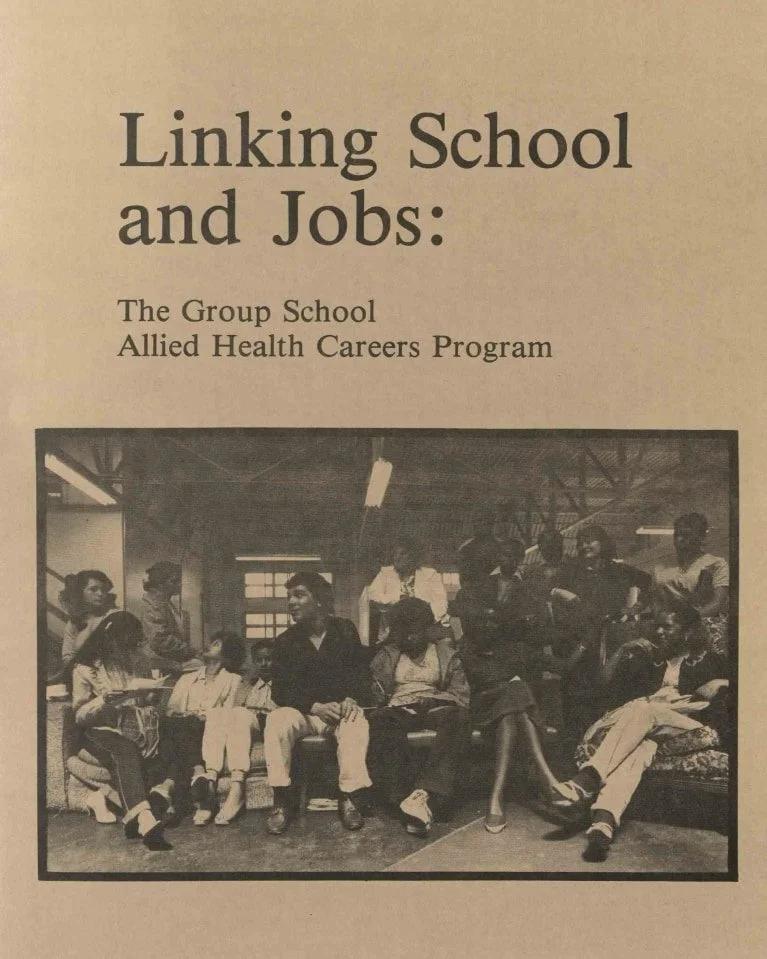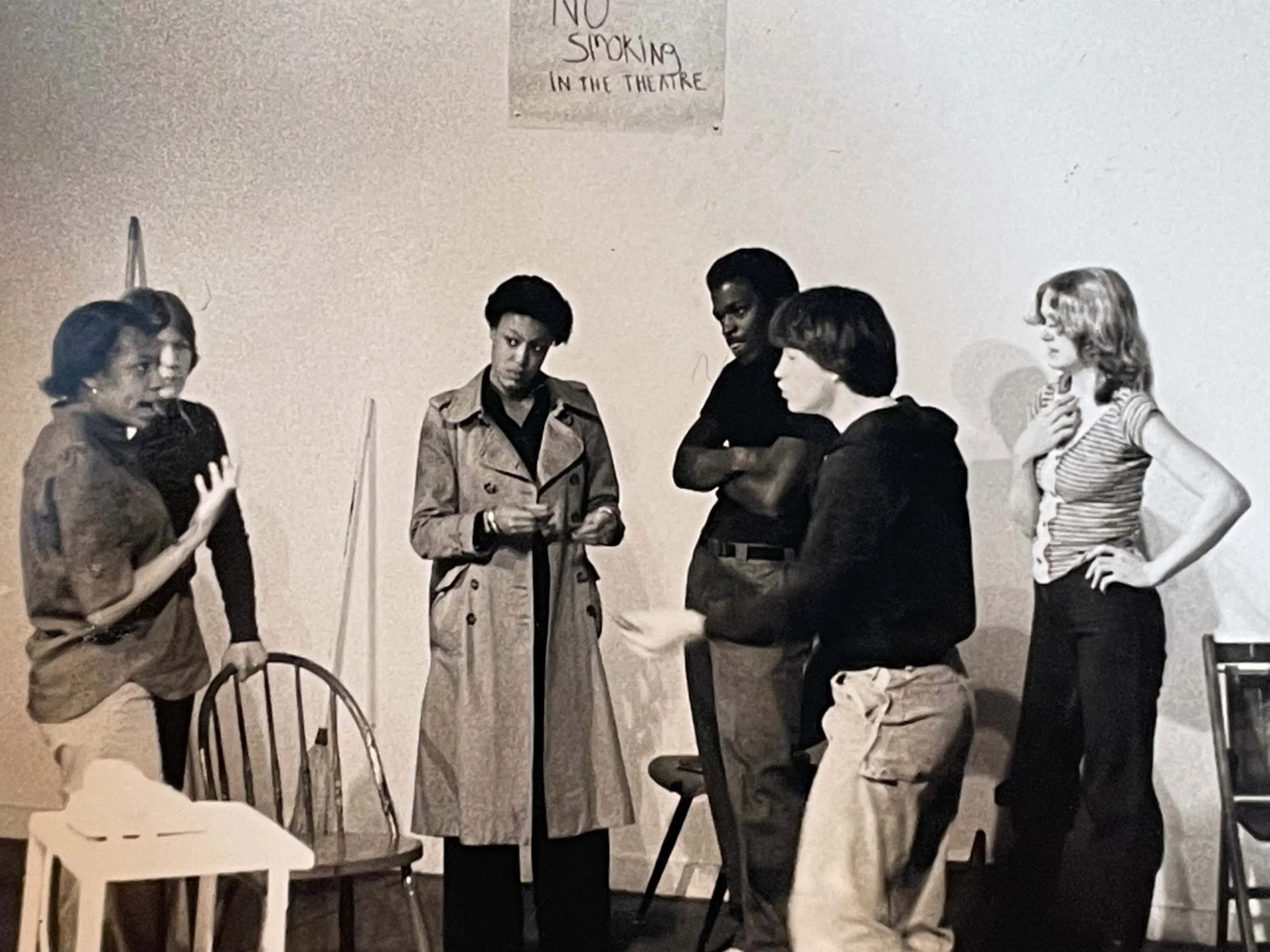Learning
Experiences
Students With A Say
Students had input into what courses would be offered each term. Their interests, along with those of their teachers, led to a list of potential courses that would then be approved in a community meeting. In a typical semester, the curriculum might include courses exploring neighborhood, class and racial identity, U.S. labor history, women’s literature and history, kitchen chemistry, and math survival skills as well as creative writing, drama, pottery, photography and playwriting.
“When students requested or needed additional courses, volunteers would be enlisted to teach individual or group tutorials.”
The pamphlets and full-length book found here document a sampling of the unique courses offered at The Group School (TGS). Because we did not receive per pupil funding from the city, one way we supported the school was through grants to write about and disseminate our courses. Although written many years ago, the curriculum content and methodology described in these documents can offer today’s educators starting points and provocations for designing learning experiences of relevance today. Check out the Tools page for examples of how you might dive into the curriculum archive.
-
Neighborhood, Youth and Class
Course materials to introduce working class youth to develop a greater understanding of themselves through exploring their neighborhoods, race and ethnic identity, and social class.
-
Group School Chemistry Curriculum: Teachers Manual
Laboratory based and not relying heavily on mathematics, this curriculum conveys chemical principles through meaningful experiments and '“tries to show why these principles are important and how they relate to things in everyday life.”
Changing Learning, Changing Lives
A High School Women’s Studies Curriculum
In 1979 the Feminist Press published Changing Learning Changing Lives, the high school women’s studies curriculum from TGS. Barbara Gates, Susan Klaw, and Adria Steinberg, the staff who had created and taught in the women’s studies program, wove together curriculum units, stories from our students’ lives, and insights on helping young working class women to find their voices, take care of their bodies, and emerge into adulthood.
The book is now out of print but is reproduced here, each part corresponding to several chapters of the books.
-
Part 1 (1-35)
Introduction, profiles of students, techniques of teaching and learning
-
Part 2 (36-89)
Unit I: Messages from Society; Unit II: Early Socialization; Unit III: Growing Up Female — Childhood, Becoming a Woman, Family, Friends, Schooling, and Self
-
Part 3 (90-105)
Unit III (continued) — Comparison-Self and Others, Notes to the Teacher
-
Part 4 (106-145)
Unit IV: Adult Sex Roles; Unit V: Sexuality
-
Part 5 (146-193)
Unit VI: Mean Streets — Case Studies, Challenges and Services for Young Women in “Trouble”; Unit VII: Women and Work — Family Work Histories, Examining “Women’s Work”; Career Exploration
-
Part 6 (194-End)
Unit VIII: Women Organizing Themselves — Women’s History, Women’s Rights, Feminism Through the Ages, Bravery of Black Women, Labor Organizing; Unit IX: Women’s News — Exploring Current Issues, Producing a Women’s Newscast and/or a Newspaper; Bibliography
The Power Of Theater
From the very beginning, the Theater Program was a core element in the life and culture of the school. Students discovered the power of theater to express their thoughts and feelings about their lives through reading, writing, and performing plays, often alongside teachers and volunteers who, like the students, were mostly new to making theater. In addition to performing written plays by Clifford Odets, Bertolt Brecht, and others, students wrote their own plays, dramatizing issues in their own lives and then performing them for students and teachers in other schools and youth programs.
For full scripts, short films, and more materials from TGS Theater Program, check out the Archive.
In this 1975 Masters thesis paper, Creating a Drama Program in a Working Class High School, Steve Seidel, one of the co-founders of the school’s theater program, explains the program’s foundational principles and practices.
-
Creating A Drama Program In A Working Class High School (1-19)
This section includes a preface and an introduction that explains the goals and purposes of this kind of alternative high school drama program.
-
Creating A Drama Program In A Working Class High School (20-44)
This section includes the first half of a section describing the curriculum for the acting classes that were designed to introduce students to the work of improvisation and collaboration.
-
Creating A Drama Program In A Working Class High School (45-73)
This final section completes the description of the acting classes and then explores reasons and processes for rehearsing and performing plays.
